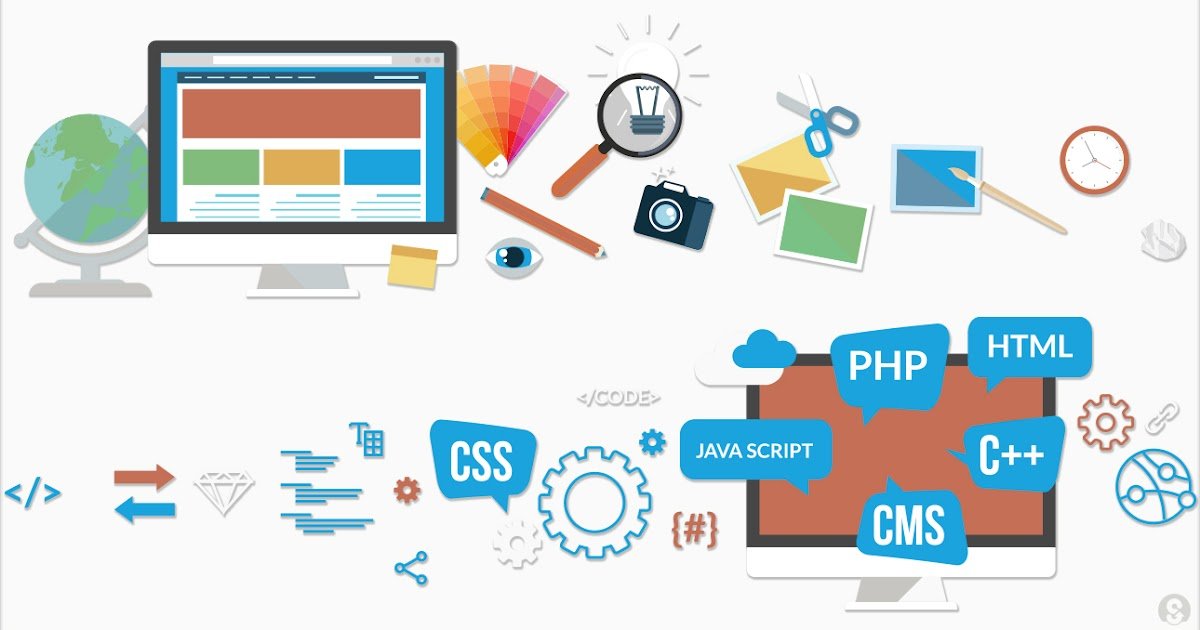In the current rapidly changing digital world front-end development is now an integral element of web-based application development. Front-end developers are in charge of designing the user interface and making sure that the app is attractive and user-friendly. To bring off this they rely heavily upon Application Programming Interfaces (APIs) to incorporate various functions and services within their applications. APIs function like a link between several software systems, which allows the communication and sharing of data.
This article will examine the most popular APIs utilized by front-end developers. It will provide an in-depth overview of each API, its usage scenarios and the benefits it brings to front-end development.
Understanding APIs in Front-End Development
What is an API?
An API, also known as an Application Programming Interface, is an established set of protocols and rules which allow various programs to talk with one and with one. APIs define the protocols for communication and data structure that programmers may utilize to communicate with libraries, external services and other components in the program.
For instance, when you are with a weather application on your smartphone it communicates with an API for weather to get the most current weather data. The API offers a structured method for apps to request data and get a response.
Why Are APIs Important for Front-End Developers?
APIs are vital for front-end developers since they allow the integration of third party services and data into web-based applications. Instead of starting by hand, front-end developers are able to make use of existing APIs to add more complex functions, like payment processing and social media sharing as well as data visualization.
APIs can also encourage modularity and reuse in code. Through with APIs, programmers are able to concentrate on developing an interface for users and experiences without using external services to provide backend functionality.
Most Common APIs Used by Front-End Developers
1. REST APIs
Description: REST (Representational State Transfer) APIs are the most frequently used API type to aid front-end development. RESTful APIs use an unstructured state and employ traditional HTTP methods (GET POST, POST DELETE, POST, GET) to communicate with resources.
Use Examples: REST APIs are employed in virtually every web-based application including retrieving data from servers to submitting forms. They can be utilized to perform a variety of applications, such as authentication of users, data retrieval, and operations for CRUD.
Advantages REST APIs can be simple to use, flexible and are widely supported for Web development Frameworks as well as libraries.
2. GraphQL
Description: GraphQL is an open-source query language used for APIs that was developed by Facebook. It lets developers request specific data with one query, thus reducing the requirement to make different API requests.
Use cases: GraphQL is ideal for applications that require a lot of data retrieval, such as the social media platform, websites for e-commerce as well as material control systems.
Advantages GraphQL gives more freedom than APIs like REST because developers can only request the data they require. This decreases the volume of data that is transferred across the network, which improves the efficiency of an application.
3. Google Maps API
Description: The Google Maps API lets developers integrate interactive maps and services based on location into their apps. It offers a variety of capabilities, such as the geocoding feature, calculation of distance and a place search.
Use Examples: The Google Maps API is frequently employed in applications that need location-based services, like real websites for real estate as well as travel apps and delivery services.
The benefits: Google Maps API is extremely reliable and provides an extensive documentation and support. Developers can use it to build custom maps, and also incorporate rich geographical data to their apps.
4. Firebase API
Description: Firebase is a platform created by Google that comes with a set of tools for creating and scaling mobile and web applications. The Firebase API comes with features such as real-time databases as well as cloud storage, authentication, and analytics.
Use Applications: Firebase is often utilized for applications which require real-time data synchronization, for example chat tools, collaborative tools as well as social networking platforms.
The benefits: Firebase simplify your development process by offering an unifying infrastructure for the backend of services. It is simple to integrate and provides an unimpeded scaling.
5. Twitter API
Introduction: The Twitter API lets developers get access Twitter data and incorporate Twitter functions in their applications. It has endpoints that allow retrieving tweets, posting tweets and managing user accounts.
Use Examples: The Twitter API is often utilized to create social media dashboards and tools for sentiment analysis, and marketing tools.
The benefits: Twitter API Benefits: Twitter API gives real-time access to an enormous quantity of Twitter’s social media data which allows developers to develop dynamic and enjoyable applications.
6. GitHub API
Introduction: The GitHub API lets developers interact with GitHub repositories, users and other organizations in a programmatic manner. It offers endpoints for managing repository repositories, issues, Pull requests and many more.
Use Examples: The GitHub API is extensively used in development tools, CI/CD pipelines and even project management software.
The benefits: Its GitHub API helps to facilitate collaboration and automation in software development projects It makes it simpler for developers to organize code repositories as well as track issues.
7. Contentful API
Introduction: Contentful is a headless CMS (information Management System) which provides an API to manage and deliver material. Contentful API Contentful API allows developers to create, edit and retrieve material in a format that is structured.
Use Examples: Contentful is commonly employed in applications that rely on content like blogs, news websites and e-commerce platforms.
Advantages Contentful API Contentful API provides a flexible and scalable method of managing material. It is able to separate material from the presentation which allows developers to distribute material through numerous channels.
8. Stripe API
Introduction: Stripe is a popular payment processing service that has an API to process online transactions. The Stripe API lets developers incorporate payment processing and subscription management along with invoicing and subscription management into their application.
Use Examples: The Stripe API is extensively used on e-commerce sites, SaaS applications, and marketplaces.
The benefits: Stripe API provides strong security features as well as ample documents, which makes it simple to install and manage payments processing platforms.
9. Facebook API
Description: The Facebook API gives access to Facebook’s social graph, which allows developers to incorporate Facebook login as well as sharing along with other Facebook features in their applications.
Use Examples: The Facebook API is often employed in social networking applications as well as marketing tools and platforms for sharing content.
The benefits: Facebook API Facebook API lets developers benefit from the huge user base of Facebook and social features, increasing the engagement of users and boosting their growth.
10. OpenWeatherMap API
Introduction: The OpenWeatherMap API offers weather data including current weather conditions, forecasts and the historical data. It can support many data format and gives access to data on weather data from any location in the world.
Use Examples: The OpenWeatherMap API is utilized in weather apps or travel apps. Additionally, it is used in any other application that needs weather data.
Advantages This OpenWeatherMap API provides exact and accurate weather data and offers a variety of pricing options that can be used for various use situations.
Key Considerations When Using APIs
Security
In integrating APIs in your application, it is essential to take into account security. Be sure APIs are accessible safely together HTTPS and also implement security mechanisms such as API key, OAuth and JWT tokens to safeguard sensitive data.
Performance
APIs may affect how well your application especially if they’re called often or the response time of the API is slow. Improve the speed of API calls by reducing the quantity of data required and with strategies to cache data when it is it is possible.
Documentation
Documentation is crucial for working on APIs. Make sure that the API you’re together is well-documented that includes precise illustrations, errors along with accurate practices. This will reduce time and minimize the risk of mistakes occurring when you are in development.
Conclusion
APIs are a crucial element of front-end development that provide the tools and services required to build feature-rich, dynamic web-based applications. They range from REST as well as GraphQL to more specialized APIs such as Google Maps and Stripe, front-end developers depend on various APIs to increase capabilities, boost user experience, and speed up development processes.
Understanding the most popular APIs and the accurate ways to utilize them effectively front-end developers are able to create more responsive and powerful applications that can meet the requirements of today’s users. As the web continues to change and grow, understanding APIs will be an essential requirement that every front-end development skillful must master looking to remain at the top of their game.
Frequently Asked Questions
REST as well as GraphQL Both APIs however they differ in how they access data. REST APIs utilize predefined endpoints that are specific to each resource, while GraphQL lets developers make requests for specific data with a single query. GraphQL allows for more flexibility, however REST is easier and more popularly utilized.
APIs may impact performance if they’re not optimized. Overly frequent or infrequent API calls may slow the application. It is essential to limit the quantity of data required, make use of caching in addition to assure your API server runs efficiently.
Yes, you are able to create an API of your own together frameworks such as Express.js (for Node.js), Flask (for Python), or Django. Making your own API lets you to design your own endpoints, and also integrate your app with other clients or services.



